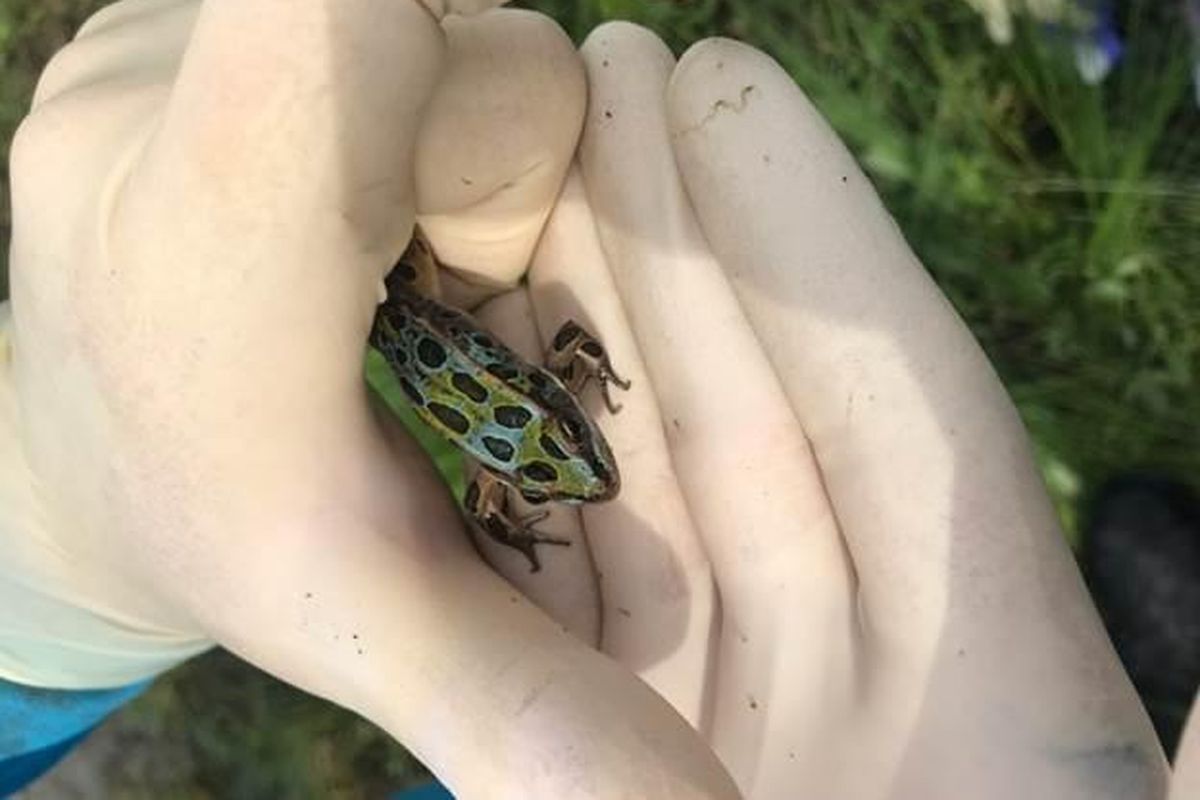Rare blue northern leopard frog found in Eastern Washington

In the arid land west of Spokane – punctuated by channels and basins carved by ancient hydraulic cataclysm – Washington biologists discovered a rare and beautiful genetic mutation in late August:
A northern leopard frog with blue spots.
“I thought I was just seeing things,” said Sean Dougherty, a Washington Department of Fish and Wildlife biologist in Ephrata.
While the endangered frogs are normally green or brown, in rare cases a frog will hatch lacking the pigment molecules that create the color yellow. Without yellow, the frogs are left only with the color blue (blue and yellow make green, remember).
That unusual coloration is a “genetic quirk” similar to albinism, Dougherty said. In the past 15 years, only three frogs have been found with this coloration.
While that rarity is due in part to the vagrancy of genetics, the widespread decline of the once-common frog species is also to blame.
Once the mainstays of high school dissections, the frogs could be found throughout North America, including Eastern Washington and North Idaho. But the species’ footprint has declined precipitously. The sole surviving Washington population is in the North Potholes Reservoir Unit of the Columbia Basin Wildlife Area, south of Moses Lake. The frog is a state endangered species and a federal species of concern.
WDFW is developing a recovery plan and considering reintroducing the amphibians to other areas. As part of that work, Dougherty and other biologists have been taking DNA samples in an effort to understand the Potholes population better. That’s how they discovered the rare blue leopard frog in August.
The arid climate of the Potholes area, combined with its seasonal ponds and wetlands, make good leopard frog habitat. Northern leopard frogs can range farther from water than many other amphibians, even venturing into grassland and meadow during the summer months, earning them the moniker “meadow frogs.”
This also protects them from the voracious bullfrog, an invasive species that has contributed to the decline of the leopard frog. Bullfrogs require year-round water sources to survive and die in vernal ponds and wetlands.
“Bullfrogs really need that standing water,” Dougherty said.
Dams along the Columbia River have destroyed potential leopard frog habitat by keeping the river from flooding. Those seasonal floods created small ponds and wetlands alongside the river. At the same time, the draining of wetlands destroyed leopard frog habitat, making them more vulnerable to bullfrogs.
In Idaho, the northern leopard frog has been extirpated, though the Idaho Department of Fish and Game and the Yellowstone to Yukon Conservation Initiative are building vernal wetlands and ponds geared toward the frogs and other amphibians in Northern Idaho near the Canadian border (see Thursday’s outdoors section for more on this).
Washington researchers have gone to around 300 ponds in the Potholes areas. Dougherty estimates there are about 500 ponds. Data collected this summer will be compared with 2015 data. That, he said, will give scientists a “pretty good sense of what happened” to the population.